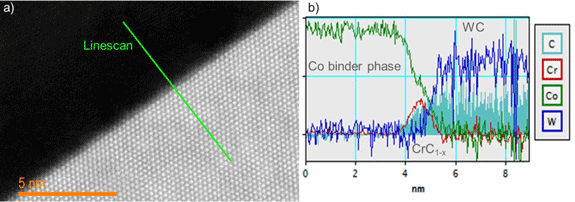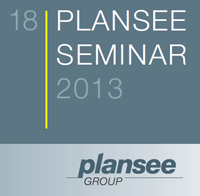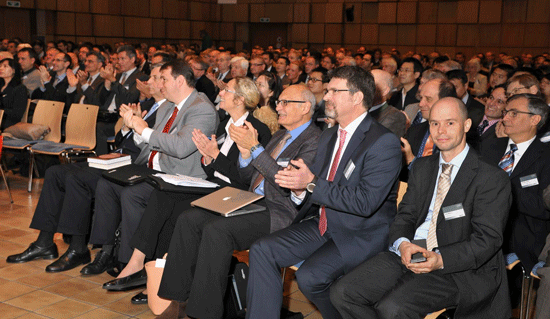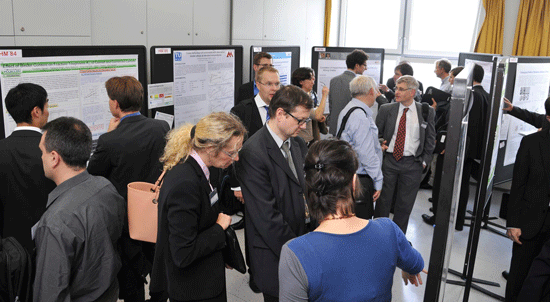Plansee Seminar 2013: Global R&D trends in the PM hardmetals industry
The first Plansee Seminar, focusing on the science and technology of refractory metals and hard materials, was organised by Prof Paul Schwarzkopf in 1952. The event has steadily grown in terms of size and prestige to become the premier global event for this important industry.
This year’s seminar boasted of 123 accepted contributions in the field of refractory metals and 144 in the field of hard materials. The 109 oral presentations, special interest seminars and poster sessions drew large crowds at all times.
Starting with global overviews of the PM markets and R&D trends, the presentations addressed nearly all disciplines in this industry, from innovations in powder production to processing, materials and their applications, from modelling and characterisation, and the important topic of recycling.
Our series of reports begins with a summary of a keynote paper presented during the opening session of the seminar focussing on global research and development trends in the hardmetals industry.
Global R&D trends in the PM hardmetals industry
Prof Dr Susanne Norgren and co- authors J Garcia, A Blomqvist and L Yin, from the Sandvik Group, in their comprehensive review paper, confirmed that cemented carbide is still the undisputed leading cutting tool, wear part and rock drilling material and presented work carried out in recent years on fine grained material, interfaces, alternative binders, alternative sintering techniques, gradient structures, high resolution microscopy and electron back scatter diffraction. They noted that among emerging trends, coupling between experiments and modelling at different length scales has been growing, as well as three dimensional modelling of microstructure evolution.
As an introduction, some market data based on the ITIA 2011 Statistical Overview of Supply and Demand [1] was presented by Norgren. “The total global tungsten market demand was 79,600 tons and if recycling was also included the actual consumption would have reached 103,500 – 111,500 tons. Out of this, 47,500 tons was consumed by the hardmetal industries, not including recycling [Table 1]. If a 30-40% use of recycled material is assumed the total tungsten consumption for hardmetals would have been around 61,750 – 66,500 tons, of which approximately 45-50% would have been submicron tungsten carbide.”

Table I ITIA 2011 Statistical Overview of Supply and Demand [1], the percentage of the W used by different market areas
Not only is tungsten consumption in China continuing to grow faster than in rest of world and is now 47,000 tons/year, some 59% of the world consumption, but this is accompanied by widened research and development activity as well. Due to the higher prices for tungsten raw materials new mines outside of China are expected to be opened and the pressure to recycle tungsten will continue to grow for both hardmetal producers and users, explained Norgren.
The authors estimate that submicron grained grades now make up almost 50% of the world tungsten carbide market and anticipate that this trend will continue to increase, not only due to a strong trend for miniaturisation, for example, smaller computers, phones etc., but also due to new and better Physical Vapour Deposition (PVD) techniques which have widened the use of PVD coated metal cutting inserts and rotary tools. On the other hand, rising metal consumption and associated mining activities have maintained a buoyant demand for hardmetal rock drilling tools, which are mainly coarse grained in microstructure. Furthermore the production of cemented carbides for metal cutting remains an important segment of the industry with incremental improvements in the fifty year old CVD coating technology. In this area, improving coating texture and modelling of substrate surface gradient formation are hot topics of interest.
Modelling at different dimensional length scales is now a basic part of product and grade development in the drive to create better products. Atomistic and thermodynamic modelling mutually contribute to the understanding of interfaces and interface structures. This is very relevant for submicron grades where the properties to a large extent are governed by the interfaces.
R&D trends
Selected topics discussed in this review are thermodynamic and kinetic modelling, submicron cemented carbide (focussing on the interfaces and inhibitor interfacial layers), alternative binders, gradients, solubilities in WC and modelling in manufacturing processes and product applications.
Thermodynamic and kinetic modelling
The several examples given in the area of thermodynamic and kinetic modelling clearly promote our understanding of the fundamentals behind how cemented carbides achieve their properties whether in bulk or as gradients. Firm predictions of not only stability regions, melting ranges, carbon balances, recipes and other properties are available from the Thermo-Calc database software for phase diagrams for many hardmetal systems. However, thermodynamic databases are never better than the experimental data on which they are based and here it is appropriate to emphasise that some fundamental questions still remain unanswered even in the ternary W-C-Co phase diagram and we still have some way to go in spite of the diffusion models and ab initio calculations.

Fig. 1 (a) Atomic resolution STEM image of a WC-Co interface showing a thin CrC(1-x) layer in a WC -10 wt%Co -1.0 wt% Cr grade. (b) Extracted intensity profile from STEM-EELS line scan across the interface as marked in (a) (Courtesy Martina Lattemann, Sandvik Coromant)
Interfaces
The importance of interfaces is known and special attention on their characterisation has found acceptance especially in the field of fine grained hardmetals. Examples of how Atom Probe Tomography (APT), High Resolution Transition Electron Microscopy (HRTEM) as well as thermodynamics and ab initio calculations have helped to gain understanding on how the interfaces are structured and affected by inhibitors have been published in the last ten years. It can be safely incurred that thin films are present between the WC grain boundaries, their occurrence depending on the composition and grain orientation. Calculations show that thin films inhibit grain growth by the nucleation and growth of new interlayers, not by inhibiting diffusion through the liquid binder. It comes as no surprise that the creation of an interlayer reduces the energy of the system.
An example of a measured interlayer of CrC(1-x) is shown in Fig. 1.
Solubilities in WC
Solubilities in and doping of the WC crystal has found renewed interest and it can be concluded that ab initio calculations are in sync with experimentally measured values.
It was already known that molybdenum is the only metallic element that has a known solubility in the WC lattice, current research shows that other than Cr with a maximum solubility of 5 wt%, all other studied elements like V,Ti, Mn, Ta. Nb, Co, Hf, etc. exhibited very limited solubilities in hexagonal WC in the range of 10-3 to 10-5. (W,Al)-C-Co composite cemented carbides are also of interest and it is reported that the content x of Al in the (W1-xAlx)C phase could vary between 0.2 and 0.6.
Part 2 of this report will be published next week and include:
- REACH and alternative binders
- Gradients
- Macro gradients
- Modelling in manufacturing process and product application
- Modelling of pressing and sintering
- Modelling of product performance in applications
- Outlook
To view part two of this article click here
References
[1] ITIA/Report/Tungsten Statistical Report – September (2012)
[2] http://ec.europa.eu/environment/chemicals/reach/reach_intro.htm
[3] http://ntp-server.niehs.nih.gov/
Acknowledgements
This review was prepared from the Proceedings of the 18th Plansee Seminar, Reutte, June 2013.
News | Articles | Market reviews | Search directory | Subscribe to e-newsletter








